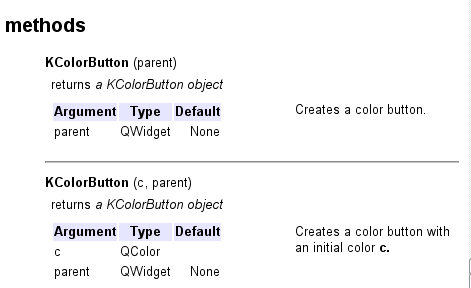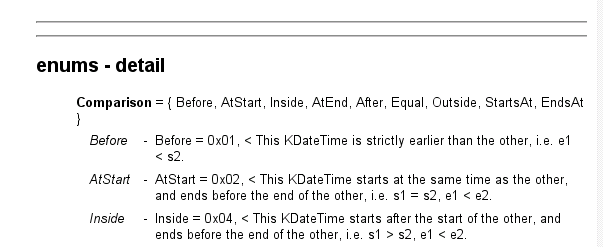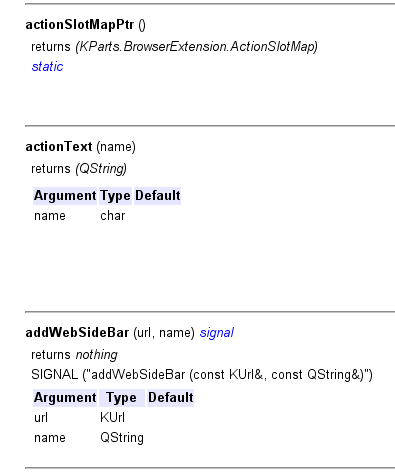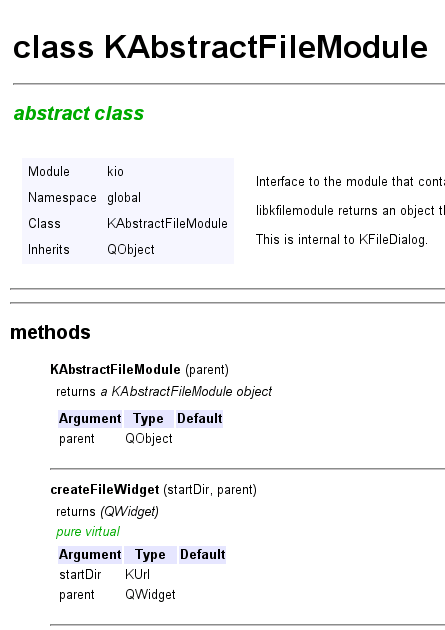|
The methods section of class's page lists in alphabetical order all of the methods defined in the
KDE4 class declaration. If the class has base classes, there are probably considerably more methods
inherited from the base class which are not shown here.
The left-hand side of the page lists the methods and their Python signature. The argument list shows
the names and numbers of the arguments, but not their types. The type information is listed in a
table below the method name. Each row shows the argument name, its type, and the default value, if any.
Methods which are not implemented in PyKDE4 are labeled and will have their method name "grayed out".
Above the table the type of value returned by the method (if any) is described.
On the right-hand side is description (again, some short, some lengthy) that describes what actions
the method performs. Some methods (or even entire classes) are marked as
Internal, Deprecated,
or Obsolete. These determinations are made by KDE4 programmers.
Methods and classes like those are included in PyKDE4 for completeness or because in some cases, other
methods or classes depend on the marked method or class.
You should avoid using internal, deprecated or obsolete methods in your code, as their function may change
or they may disappear in new releases.
Versions If there are no version limitations specified, the method is available in all PyKDE4 versions.
Versions are specified as "KDE X.Y.Z and later", which means the method is available in version X.Y.Z, as 'before
KDE X.Y.Z", which means the method is NOT available in version X.Y.Z, but is available in any previous version,
or "KDE A.B.C to before KDE X.Y.Z", which means it is available in version A.B.C, any version before X.Y.Z, but
NOT in X.Y.Z itself. Or in other words, versions are always given as A.B.C <= version < X.Y.Z
|

|





